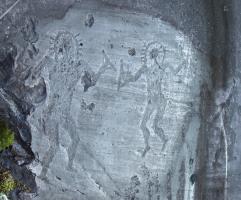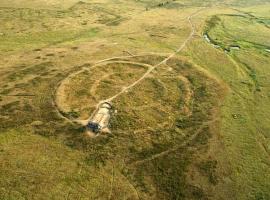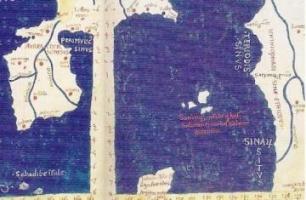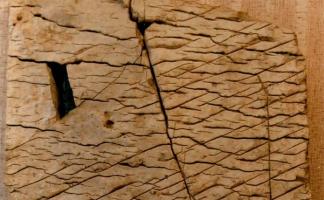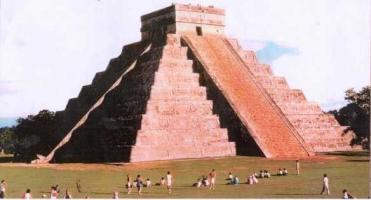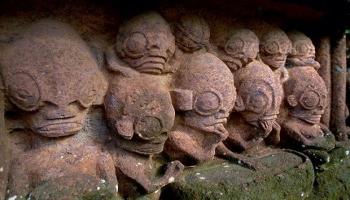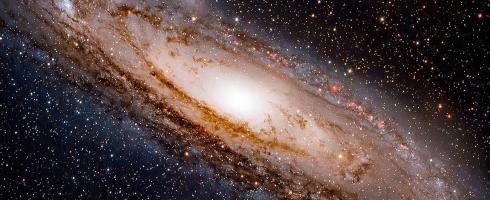Casting Light on the Ancient World

According to Charles Berlitz, William König, a German archaeologist, discovered strange 2000 year old cylinders in jars "near Baghdad...shortly before World War II" [The Bermuda Triangle, London, 1975, pg 161]. They turned out to be ancient batteries, complete with iron terminals, that still functioned once an electolyte of copper sulphate was added! Apparently, they were used for electroplating via electrolysis, an allegedly "modern" process. The Chambers Concise Dictionary defines electrolysis as
"decomposition by electric current, with migration of ions shown by changes at the electrodes."
In 1807 Sir Humphry Davy [1778-1829], inventor of the miner's safety lamp, had constructed and used a 250 cell battery, "the largest...ever built" [Encarta 99], to pass a powerful electric current
"through solutions of various compounds suspected of containing undiscovered elements." [Ibid.]
This is how electrolysis works. The direct current ionises the solution, positive ions being attracted to the negative electrode and vice versa. The first electric battery was named after its creator Alessandro Volta [1745-1827], hence voltage, and the galvanic battery after Luigi Galvani [1737-98], Professor of Astronomy at the University of Bologna. Galvani studied the effects of electricity on animal nerves and muscles, and managed to "reanimate" apparently dead matter during electrical storms using scissors as conductors! Both batteries produce electricity by chemical means. The Guinness Book of Records tells us the first light bulb was invented by a German, Heinrich Goebel, in 1860 in New York, yet the compilers of Encarta 99 think he doesn't even warrant a mention! Instead we have Thomas Alva Edison [1847-1931], in 1879, showing "publicly his incandescent electric light bulb, his most important invention and the one requiring the most careful research and experimentation to perfect..."
As is often the case in science, you find that someone else has simultaneously and independently developed something similar. In Edison's case it was Britain's Thomas Swan. In 1830 Michael Faraday [1791-1867] had proven that electric current could be conducted through wire. This brings to mind Benjamin Franklin inventing the lightning conductor in 1752, after he'd flown a kite in a storm.
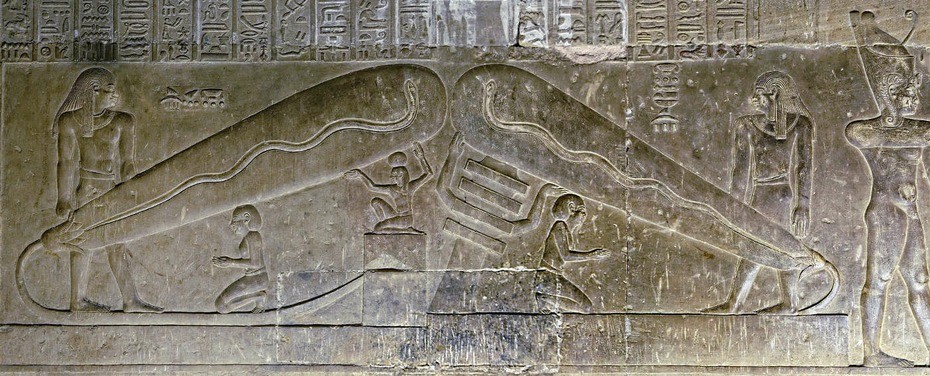
However the image proves that, once again, the "ancient" world showed us the way. Berlitz wrote that they "strongly resemble powerful light bulbs with braided cables attached to what may be a switch or generator." [Bermuda Triangle, pg. 163]. Judging by the filaments', it seems the left light is on [note the hands], the right off. The cable's banding, according to Dr John Harris of Oxford [quoted by Berlitz], suggests "a bundle of many (multipurpose) conductors" instead of a "single high voltage cable". My father, an electrical engineer, says that the djeds are like power station insulators, preventing electricity passing from one thing [in this case a conductor] to another.
But how did the Egyptians generate electricity? Alan Alford, in Gods of the New Millennium, mentions a theory by Bernd Hartmann, an engineer, and work by researchers on a Equinox programme [both in 1995]. The latter attempted to produce "a super-efficient energy device" [pg. 203] where output vastly exceeded input, a notion "contrary to the accepted laws of physics, particular that of conservation of energy" [ibid.]. The "water fuel cell" designed by Stan Mayer [was the original in the Queen's Chamber niche?] divides water [somehow drawn from the Nile] into hydrogen and oxygen, the so-called "airshafts" channelling the split gases. As I understand it, Alford is suggesting that the building may've functioned like a huge reactor! The generator and output device was in the missing capstone.










